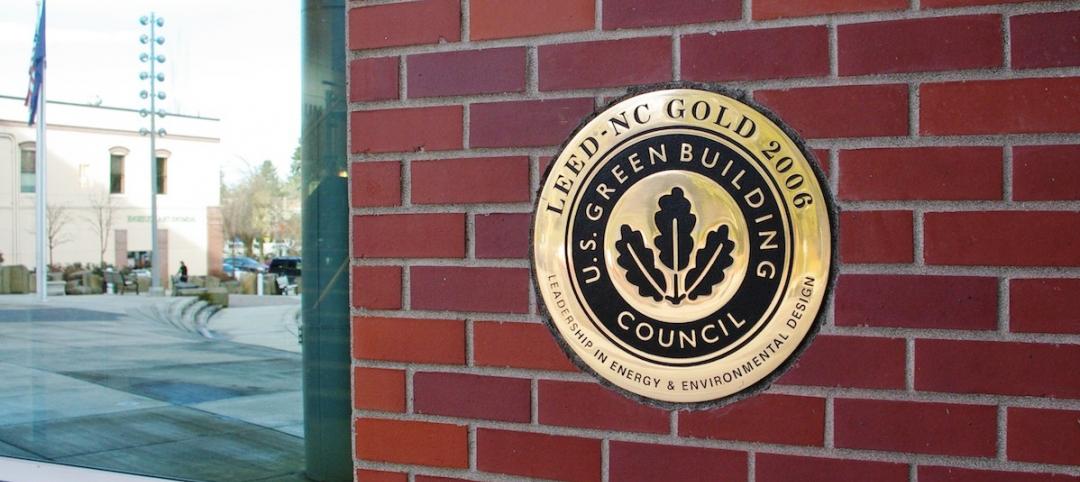Representatives from the architectural regulatory authorities of United States, Canada, and Mexico have announced a major agreement to mutually recognize architect credentials in the three countries, making it possible for architects to work across North American borders.
The National Council of Architectural Registration Boards (NCARB) in the United States, in conjunction with the Canadian Architectural Licensing Authorities (CALA) and the Federacion de Colegios de Arquitectos de la Republica Mexicana (FCARM), announced the final implementation of the Tri-National Mutual Recognition Agreement for the International Practice of Architecture among the United States, Canada, and Mexico.
The agreement represents over a decade of negotiations, bringing cross-border recognition of professional credentials from concept to reality in the spirit of the North American Free Trade Agreement (NAFTA). Qualified architects, from each country, who satisfy the requirements of the agreement, will be granted a credential that will lead to a license to practice architecture in the host country.
Informally known as the Tri-National Agreement, the pact outlines specific requirements that architects must satisfy when pursuing mutual recognition. These include education and work qualifications, as well as submitting documentation to confirm the individual’s credentials. A few of the basic eligibility requirements include:
• Completion of a professional degree in architecture from a program accredited by the National Architectural Accrediting Board (NAAB), the Canadian Architectural Certification Board (CACB/CCCA), Acreditadora Nacional de Programas de Arquitectura y Disciplinas del Espacio Habitable (ANPADEH), or recognized equivalent.
• A minimum of 10 years of post-licensure experience in the architect’s home jurisdiction.
• Proof of “Good Standing” in the home jurisdiction, as verified by the local regulatory authority.
• Knowledge of the codes, laws, and other matters applicable to the practice of architecture in the host country.
• Submission of a dossier of work to satisfy the specific competencies outlined in the agreement related to “responsible control and comprehensive practice.”
• Completion of an interview before a review panel in the host country, conducted in the language of the host country.
The agreement, along with similar programs, opens doors to qualified architects as the world and architectural practices become more globally connected. Architects interested in pursuing the opportunity for licensure outside of their home country should review the eligibility requirements and program information in greater detail as posted on the NCARB website. Additional details and standard application forms can be obtained by contacting the regulatory authority in the architect’s home country.
The path to the Tri-National Agreement has its origins in the passage of NAFTA in 1994, which spurred a discussion between leaders and regulators of the architecture profession in the United State, Canada, and Mexico to consider ways to facilitate the mutual recognition of licensure credentials among all three countries.
The initial agreement, signed in 2005 by the leaders of the profession in all three countries, marked what many considered to be one of the first professional services recognition programs under NAFTA. The study of the path to licensure in each country, the subsequent negotiations, the pilot program, and the final mechanisms for implementation continued over the following years, with support from volunteer leaders and staff from all three countries’ licensing authorities.
Throughout the process, the underlying goal has been to remove barriers and provide qualified architects the opportunity to offer professional services across borders while ensuring the protection of the public health, safety, and welfare. The agreement applies to architects from the United States, Canada, or Mexico who have not used other mutual recognition agreements for initial licensure in their home country.
Related Stories
| Jun 7, 2013
Must see: Building façade made of massive concrete drain pipes
Looking to create a unique atmosphere using natural materials for the Prahran Hotel pub near Melbourne, local architect Techné Architects cleverly incorporated a series of concrete sewer pipes into the building's main façade.
| Jun 7, 2013
40 Under 40 retrospective: Where are they now?
Every month we’ll be catching up with past 40 Under 40 honorees to see what they’ve been up to since winning the award. This month we focus on a construction manager and a healthcare designer.
| Jun 7, 2013
First look: University of Utah's ‘teaching hospital for law’
The University of Utah broke ground on its cutting-edge College of Law building, which will facilitate new approaches to legal education based on more hands-on learning and skills training.
| Jun 7, 2013
First look: Austin breaks ground on 'light-filled' Central Library
The design scheme by Lake|Flato and Shepley Bulfinch incorporates reading "porches" and a light-filled, six-story atrium.
| Jun 5, 2013
Survey of AE firms shows profits, hiring on the rise
A recent survey of more than 40 Boston-area architecture and engineering companies by consulting firm DiCicco, Gulman & Company confirms continued growth in business volume.
| Jun 5, 2013
USGBC: Free LEED certification for projects in new markets
In an effort to accelerate sustainable development around the world, the U.S. Green Building Council is offering free LEED certification to the first projects to certify in the 112 countries where LEED has yet to take root.
| Jun 4, 2013
SOM research project examines viability of timber-framed skyscraper
In a report released today, Skidmore, Owings & Merrill discussed the results of the Timber Tower Research Project: an examination of whether a viable 400-ft, 42-story building could be created with timber framing. The structural type could reduce the carbon footprint of tall buildings by up to 75%.
| Jun 4, 2013
Notification reinvented: SimplexGrinnell introduces revolutionary family of intelligent notification appliances
Simplex TrueAlert ES uses addressable technology to improve protection, simplify installation and reduce operating costs.
| Jun 3, 2013
6 residential projects named 'best in housing design' by AIA
The Via Verde mixed-use development in Bronx, N.Y., and a student housing complex in Seattle are among the winners of AIA's 2013 Housing Awards.
| Jun 3, 2013
Trifecta of awards recognize Vision/Rubenstein campus, Bayer Healthcare HQ
When Vision Equities, LLC and Rubenstein Partners purchased the 200-acre former Alcatel-Lucent campus in Whippany a little more than two years ago, the partnership recognized the property’s potential to serve as a benchmark infill revitalization for the State of New Jersey.

















